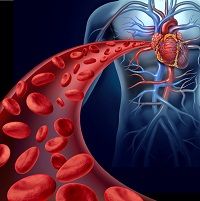Article
Increased Cardiovascular Risk Linked to Psoriatic Arthritis
Author(s):
Patients with psoriasis and psoriatic arthritis (PsA) commonly experience joint pain. They are also at higher risk for cardiovascular disease (CVD).

Patients with psoriasis and psoriatic arthritis (PsA) commonly experience joint pain. They are also at higher risk for cardiovascular disease (CVD).
Investigators from the Mayo Clinic recently conducted a study to examine the role of cardiovascular disease risk factors in psoriatic arthritis. Analysis of this relationship in the past has produced unsatisfactory results, due in part to previous research being limited by selection bias and imprecise definition of outcomes. Therefore, the team sought to find a potential correlation between the conditions.
“There is an association between rheumatoid arthritis and (RA) and CVD due to traditional and nontraditional cardiovascular risk factors (ie, elevated inflammatory markers, rheumatoid factor [RF] seropositivity, corticosteroid use),” the researchers explained.
A total of 158 patients with PsA (61% males, 44% obese, and age range of 19 to 74 with an average age of 43.4) were assessed. The researchers reviewed their medical history to identify CVD risks and events. In addition, the Framingham Heart Study (FHS) algorithm was used to assess risk of CVD within the next decade based on each patient’s age, sex, smoking, diabetes, hypertension, cholesterol, and high-density lipoprotein (HDL).
According to study results published in Arthritis Care & Research, 54 patients (34%) were found to have at least 2 CVD risk factors. Within 10 years, 17% of the patients experienced a CVD event — which is twice as high as the team predicted based on the FHS algorithm.
“Yet, the consequences of underestimating CVD risk in the PsA population in clinical practice may result in a missed opportunity to intervene early to due to a lack of accurate detection tools,” the authors wrote.
Of the 126 patients who were at least 30 years old without a history of CVD, 18 had a CVD event within the first 10 years of their PsA diagnosis. Furthermore, 33% of those patients had an FHS of at least 10% or higher and 11% had 20% or higher.
“The majority of newly diagnosed PsA patients have a >10% risk of CVD within 10 years of PsA incidence,” the team concluded.




